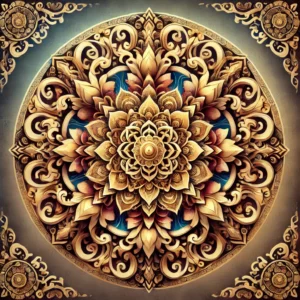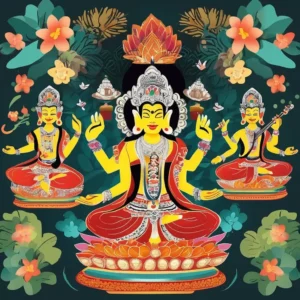
In the heart of Bali’s vibrant culture lies a rich tradition of dance that has captivated audiences for centuries. From graceful movements that tell ancient myths to dynamic performances that celebrate life’s milestones, traditional Balinese dance is a mesmerizing art form that reflects the island’s unique heritage and spiritual beliefs. In this exploration, we delve into the enchanting world of Balinese dance performances, unraveling the intricate steps, vibrant costumes, and profound symbolism that make them a cherished cultural treasure.
The Essence of Balinese Dance: A Celebration of Life and Spirituality
Balinese dance is more than just a form of entertainment; it is a sacred ritual that embodies the island’s cultural identity and spiritual essence. Rooted in Hindu mythology and animistic beliefs, Balinese dance is deeply intertwined with religious ceremonies, temple rituals, and communal celebrations that honor the gods and ancestors.
Each dance tells a story, whether it’s a tale of love and devotion, a depiction of mythical creatures, or a reenactment of epic battles between good and evil. Through intricate hand gestures, expressive facial expressions, and fluid movements, dancers convey emotions, themes, and narratives that resonate with audiences on a profound level.
The Diversity of Balinese Dance: A Tapestry of Styles and Genres
Balinese dance is as diverse as the island itself, with a wide range of styles and genres that reflect its multicultural heritage and historical influences. From classical court dances that trace their origins to the royal palaces of Java to folk dances that celebrate the rhythms of rural life, Balinese dance encompasses a kaleidoscope of traditions and techniques.
One of the most iconic forms of Balinese dance is the Legong, a classical dance characterized by intricate footwork, delicate hand movements, and elaborate costumes. Often performed by young girls, Legong is a celebration of grace and beauty that transports audiences to a realm of divine elegance and serenity.
In contrast, the Barong dance is a dynamic and theatrical performance that tells the story of the eternal struggle between good and evil. Featuring colorful costumes, elaborate masks, and lively choreography, the Barong dance is a riot of energy and emotion that embodies the spirit of Bali’s vibrant culture.
The Art of Performance: Mastery and Devotion
Balinese dance is not just about the movements; it’s also about the dedication, discipline, and devotion of the performers who bring these ancient traditions to life. Dancers undergo years of rigorous training under the guidance of master teachers, learning the intricacies of rhythm, expression, and technique that are essential to their craft.
Beyond technical proficiency, Balinese dancers also embody spiritual qualities such as humility, grace, and devotion, which are essential to their role as vessels of divine energy and expression. Before each performance, dancers undergo rituals and ceremonies to purify themselves and invoke blessings from the gods, ensuring that their movements are imbued with spiritual power and authenticity.
The Magic of Performance: Experiencing Balinese Dance
Attending a traditional Balinese dance performance is a transcendent experience that transports spectators to a realm of beauty, mystery, and enchantment. From the moment the musicians strike up the gamelan orchestra to the final bow of the dancers, each moment is infused with a sense of magic and wonder that lingers long after the performance ends.
Throughout Bali, visitors can immerse themselves in the world of Balinese dance through a variety of performances held in temples, village squares, and cultural centers. Whether watching a grand spectacle at a royal palace or an intimate performance in a traditional bale pavilion, audiences are sure to be captivated by the beauty and artistry of Balinese dance.
Preserving Balinese Dance: Sustaining Cultural Heritage for Future Generations
As guardians of Bali’s cultural heritage, it is essential to preserve and protect the traditions of Balinese dance for future generations to cherish and uphold. Efforts are underway to document, promote, and revitalize traditional dance forms through education, training programs, and cultural preservation initiatives.
Organizations such as the Indonesian Ministry of Culture and Tourism and the Bali Cultural Heritage Foundation work tirelessly to safeguard Balinese dance and ensure its continued vitality and relevance in the modern world. By supporting these efforts and embracing the beauty and significance of Balinese dance, we can ensure that this cherished cultural treasure remains a source of inspiration and pride for generations to come.
Conclusion
In conclusion, traditional Balinese dance performances are a testament to the island’s rich cultural heritage, spiritual traditions, and artistic excellence. From the graceful movements of the Legong to the dynamic energy of the Barong, Balinese dance embodies the essence of Bali’s vibrant culture and timeless beauty.
As spectators, participants, and admirers of Balinese dance, it is our privilege and responsibility to honor and preserve these ancient traditions for future generations. Through education, appreciation, and support for cultural preservation efforts, we can ensure that Balinese dance continues to thrive as a living expression of Bali’s cultural identity and spiritual legacy, captivating audiences and inspiring wonder for centuries to come.





